Chery baby re-sets hybrid admission
/Tiggo 4 petrol-electric cheaper than tech leader’s choices, but falls behind on running cost.
Read MoreTiggo 4 petrol-electric cheaper than tech leader’s choices, but falls behind on running cost.
Read MorePopular model has put certification issue behind it.
Read MoreNZ-market model caught up in Japan’s admission of improper certification. (This story replaces an earlier report).
Read MoreLexus baby now the cheapest buy - but only when the entry edition is considered.
Read MoreFront and all-wheel-drive editions with plenty of upmarket pizzazz could be the ticket for sub-UX offer landing in March.
Read MoreThe LBX draws off a popular Toyota small car but delivers to a premium audience and seems to have more zest.
Read MoreThe GR Sport version will site as the second-most expensive variant, $500 below the Limited.
Read MoreNot much is being said here yet about the Corolla Cross. Different story in Australia.
Read More

TWO unrelated recalls within a week have befallen a recently-released Toyota model that was in the running for the country’s top motoring award.
Subject to the actions is the latest Yaris, in a hatchback form that was under consideration for New Zealand Car of the Year 2020, an award that subsequently went to the Mercedes EQC, and an elevated crossover version, called Yaris Cross, that has just followed it into the showroom.
A recall notified today requires replacement of rear centre seatbelts in 392 examples of the Yaris Cross.
This follows an action notified two days ago that dedicates to the Yaris hatch and Yaris Cross with a mild hybrid drivetrain and centres on a transmission issue that might cause affected cars to stop suddenly.
The latter action involves some 513 cars.
Both faults require dealership repair but the latter is particularly time consuming.
The brand has identified that the remedy requires a repair estimated to take nine hours’ workshop time, because it entails removing the engine in order to reach the affected component, an input damper within the transmission.
The fault raises as a potential for abnormal slippage of the transaxle damper when the driver accelerates rapidly. If this occurs, the vehicle’s warning lights will turn on and there is potential for the hybrid system to enter a ‘fail safe’ mode, Toyota says, that curtails the electric involvement.
The affected models were manufactured from October 2019 to September 2020. A remedy has been implemented on models manufactured since.


MIGHT an incoming high-set crossover version of the new Yaris so overshadow the orthodox models arriving now as to endanger their ongoing showroom presence?
The possibility of this has been acknowledged by the brand’s national boss.
“I believe over the next 12 to 18 months that Yaris Cross will be the Yaris hatch replacement,” says Toyota New Zealand’s newly-installed chief executive, Neeraj Lala, in speaking to changing trends in the light car category.
“Given the trends in the market and given that this car (the Cross) has such high appeal to a slightly older demographic, I think the Yaris Cross will be the dominant small car for us.

the yaris cross is about six weeks from release.
“What that means for Yaris hatchback moving forward we will wait and see.”
Though it has never been able to emulate the volumes achieved by Toyota’s most popular car, the Corolla, Yaris has traded as a solid performer across three preceding generations, though registrations have diminished in the past two years, from 2002 in 2018 to 1802 last year.
The light car sector still achieves around 10,000 to 11,000 units per year for an 11 percent share of new car sales, according to Toyota NZ. Yet the market leader’s optimism about where is going seems greater than general industry sentiment. Many brands have struggled and core historic rival, Ford, has become so disillusioned as to pull mainstream editions of the Fiesta and instead pin all hope on a performance ST.
TNZ’s ongoing positivity seems driven in large part because it is strengthening its private buyer business and now has a hybrid drivetrain.
Yet it is also acknowledging change in consumer taste. Hence why the Yaris Cross is just weeks away from introduction.

TNZ has yet to fully unwrap its plans for this derivative, but as a spin-off design off the same engineering and design base as the pathfinder hatchbacks it could well also fully replicate the hatchback line which comprises four 1.5-litre petrols, all driving through CVTs, two with a hybrid drivetrain, and in GX and ZR specification grades.
Being taller and with greater ground clearance than the donor – though only for show (no additional off-seal competence is claimed) – the Cross will potentially have a premium over the hatches, which range from $25,990 to $32,990, unless a special paint finish is chosen. That adds $500.
A crossover is just one new direction for Yaris – it is also set to configure here as a fully hot hatch by year-end.
Inspiration for the wild 192kW/360Nm four-wheel-drive turbocharged GR (for Gazoo Racing) car comes from Toyota’s entry in the wavering World Rally Championship and is also fired by the brand’s determination to rev up its showroom image.
The GR will be the basis for a replacement for the Yaris that currently competes in WRC and would assuredly have been seen in action here in September had not our round been skittled by coronavirus.
Interestingly, the brand has already started the GR push in Japan with a curious concoct called the RS. This delivers the same imposing wide-hipped body, bespoke aero package, twin exhaust outlets and ultra-wide stance of the full-fat GR but runs the mainstream petrol engine. There’s no talk of it coming here.

TNZ has already taken 20 firm orders for the GR and says this interest has been enough to persuade Japan to provision more than the five units it originally earmarked for NZ for this year.
TNZ’s enthusiasm for the additional family members notwithstanding, it also sees interest in the Yaris as it presents just now being re-energised.
The model going to a fresh platform promising better driving feel, a lift in safety equipment and the hybrid’s efficiency have been cited as factors expected to raise the car’s game and status.
The latter might seem of especial interest, though the tech has taken its sweet time getting here. While this is the first hybrid Yaris available new here, it’s actually the third Toyota has created: The predecessors were based on the gen three car that NZ took from 2011; the first went into production in 2012 then was radically re-engineered four years on. However, it was only ever available in certain markets, none at this end of the world.
This latest one looks a lot more convincing than the predecessors, even though the pure electric operability is as limited as on any other Toyota hybrid – basically, the battery-only impetus avails at start-up, in reverse and at very low speed, for very limited duration, moving forward. In keeping with the Toyota/Lexus hybrid culture, it of course also lacks capability for plug-in replenishment, a feature required to establish connection as an electric car.

Yaris misses out on claiming as the country’s cheapest battery-assisted new passenger product - that title being recently snared by the Suzuki Swift hybrid.
Yet it certainly stakes a strong claim for market-leading efficiency (76 grams per 100km) and economy, siting as the most fuel efficient car in New Zealand without the ability to run on batteries alone, with the lithium ion battery-fed 85kW drivetrain eking an official combined consumption of 3.3 litres per 100km.
That figure gives it a narrow lead over other established sippers, nonetheless. For instance, it’s just a 0.1L/100km advantage over the claimed optimal from a full-sized Prius and a 0.6L/100km advantage over a car that would set to now be bumped from the market, as it’s been around for eight years.
That’s the Prius C, which also sits in a lower tech level by having nickel hydride batteries. The closest rival outside Toyota is the Hyundai Ioniq Hybrid, which delivers 3.4L/100km. As always, all this becomes somewhat theoretical in real-world conditions anyway.
Still, Lala reckons those factors will be acknowledged by the Green-minded, saying: “With the … hybrid, you know you will be reducing your carbon footprint.”
The 1.5-litre engine also does its bit, through applying the Atkinson-cycle principles that have featured in previous fuel-eking Toyota petrol engines, but in a three-cylinder format. Toyota claims the 1.5 has a rated thermal efficiency of 40 percent, which it says is greater than comparable diesel engines. Emissions are higher that the hybrid, at 114g/km, yet the standard engine is more efficient than the outgoing car’s by some margin.
So how does it go? Erm ….

Opportunity to independently assess the model’s mettle and verify Lala’s claim of this being “the most premium small car Toyota has built” that “lends a driving experience unrivalled in the segment” and is built to be fun has been left unfulfilled.
TNZ broke with the convention of a media gathering at a central location with cars on hand to drive, instead favouring a remote internet conference, with 90 minutes of presentations beaming out from TNZ HQ, which last week announced as the first site in Palmerston North to achieve 5G.
A fallout from Covid-19 concerns? Certainly, several past such national events conducted by other brands have been – but only during lockdown. Now, of course, we are free of restrictions on travel and mingling.
However, TNZ reckoned it didn’t see potential from a traditional media gathering, on grounds that it couldn’t corral enough cars for a drive programme. (Yes, just to remind, this IS the brand that dominates the market we’re talking about; primarily being serviced by factories in Japan, whose production was largely unscathed by coronavirus). It has promised to stage an orthodox event for the Yaris Cross and GR in October.
As previously reported, this Yaris runs two kinds of CVT – the pure petrol’s coming, in ZR form, with paddle controls and an astounding, potentially bewildering 10-speeds – and also breaks ground by achieving the latest Toyota Safety Sense package as standard.
Even the entry-level car gets dynamic radar cruise control and lane-tracing assist. In a Toyota first, front seat centre aisle airbags have been added to reduce the risk of the driver and front passenger colliding during a side-on collision.
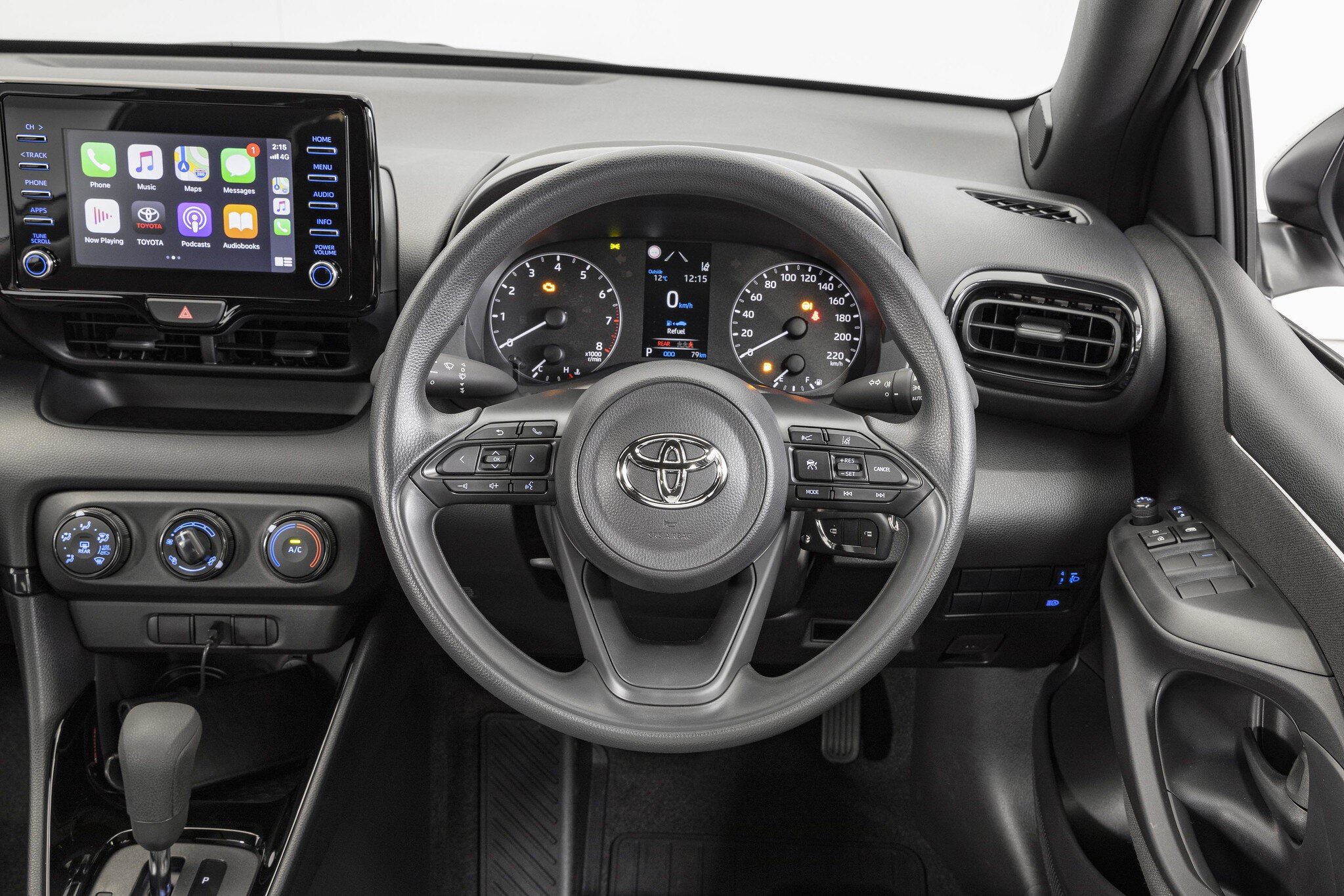

The pre-collision system has also been updated to use a camera, radar and autonomous emergency braking to avoid or mitigate the effects of a crash and it is the first Toyota to gain two collision avoidance systems, delivering automatic braking and steering intervention, previously restricted to some Lexus product.
Aside from detecting vehicles and pedestrians both day and night, and cyclists during the day, the full system is also claimed to detect and automatically brake to avoid other vehicles and pedestrians when turning at intersections. The on-board camera can also recognise speed signs and alert drivers if they’re going above the posted limits and also facilitates a lane-keep function.
The ZR variants also feature blind spot monitor plus front and rear parking sensors that can trigger the brakes to avoid contact.
It is the next Toyota to adopt full smartphone integration including Apple CarPlay and Android Auto. Functionality is via a large, high resolution touchscreen that stands out as one of the high-quality features now in a cabin in which, Toyota says, trims are now more premium.
The GX has a black interior, while the ZR has a contrasting grey and black interior with red accents, both with cloth trims. The ZR has sports style seats, climate control air conditioning, smart entry with push button start, digital speedometer and a heads-up display.

TNZ is promoting this fourth-generation Yaris as being more spacious than predecessors. The front seats have been moved outwards by 10mm to create more space between the driver and front passenger, while the seats are lower in the vehicle also. More storage space has been added in the front console, under the audio unit and in front of the front passenger.
The Yaris and Yaris Cross have the same 2560mm wheelbase, but the hatch is 240mm shorter overall, the crossover adding 60mm to the front overhang and 180mm to the rear, to ensure more interior space. The ground clearance is 60mm higher with the Cross and, with 1550mm height, the hatch is 90mm lower and 20mm narrower overall.
The maker is also asking consumers to take note of the car’s “new energetic and sporty look”. The GX features new 15-inch steel wheels with cover, while the ZR has two-tone machine- finished 16-inch alloys.
Keeping with that theme, the ZR is available in two two-tone options – an ebony roof coupled with either eclectic blue or coral exterior paint options.
The combined effect of the improvements does hit the bottom line, of course. Take note that the outgoing line priced between $23,290 and $27,490 when it launched back in 2012. However, Lala says the impetus has not been to sell Yaris as the cheapest car but as the best; TNZ research also suggests buyers are increasingly looking for more premium features in the choices, and don’t mind paying a little extra for it.

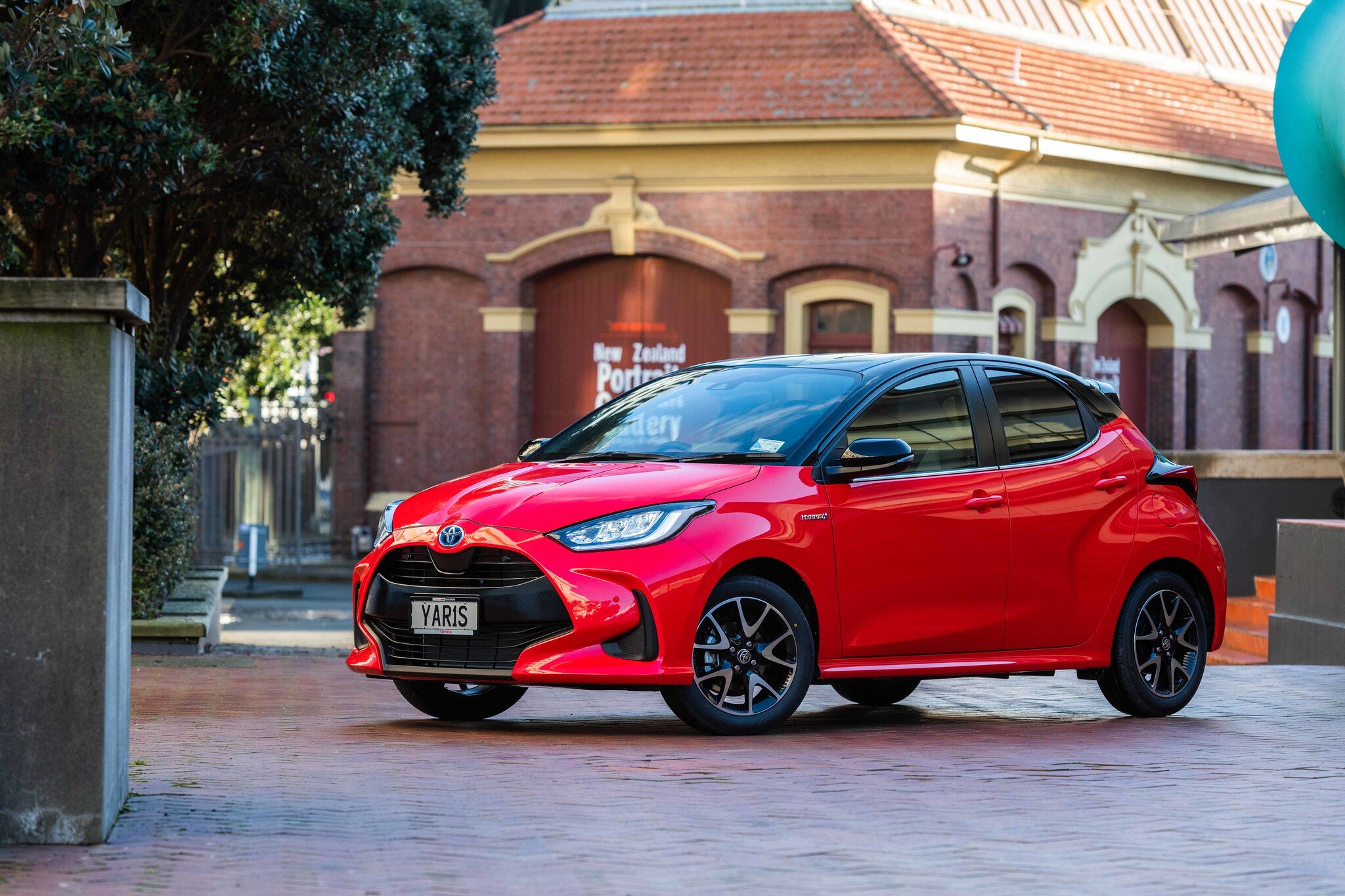
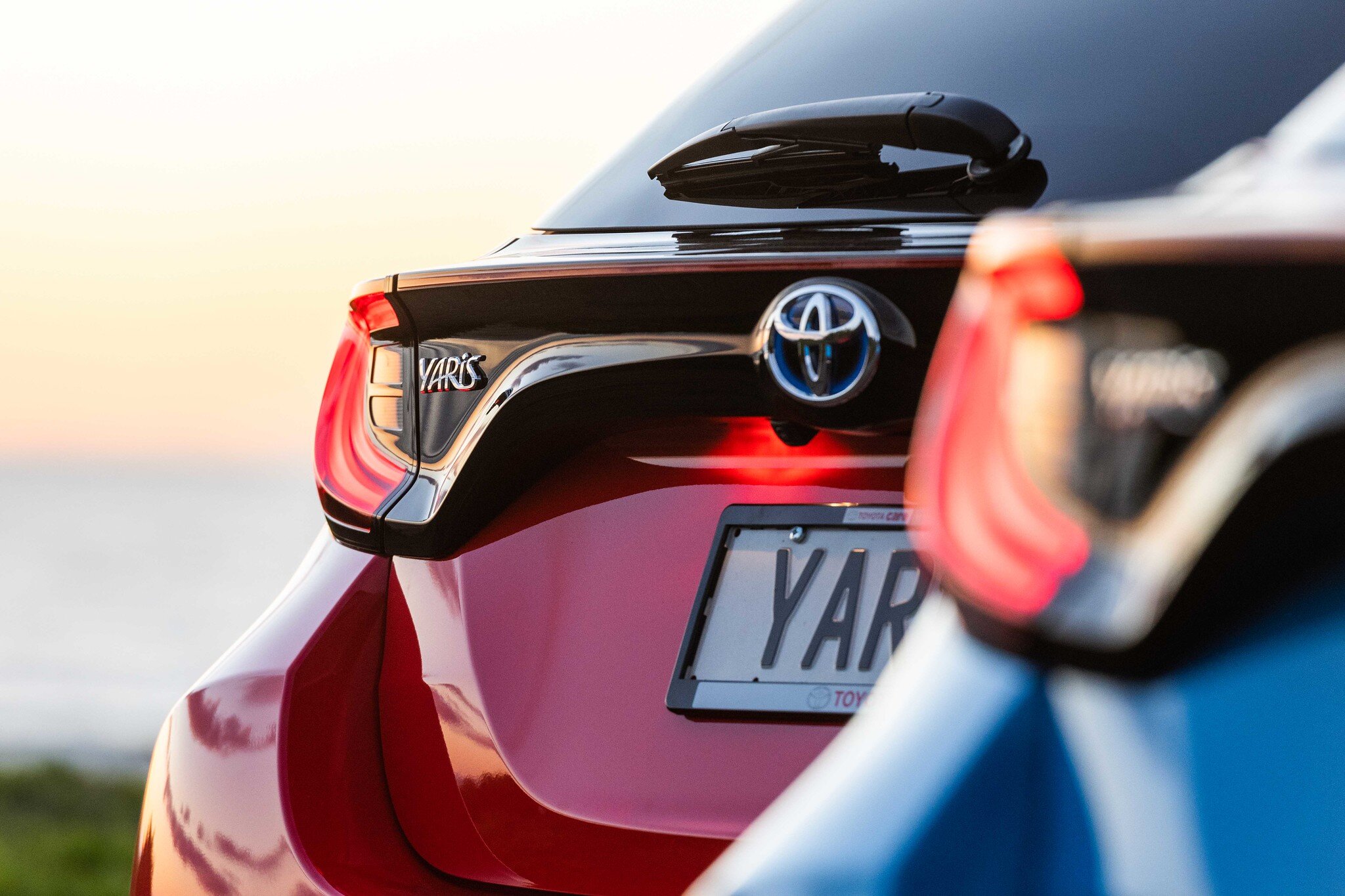
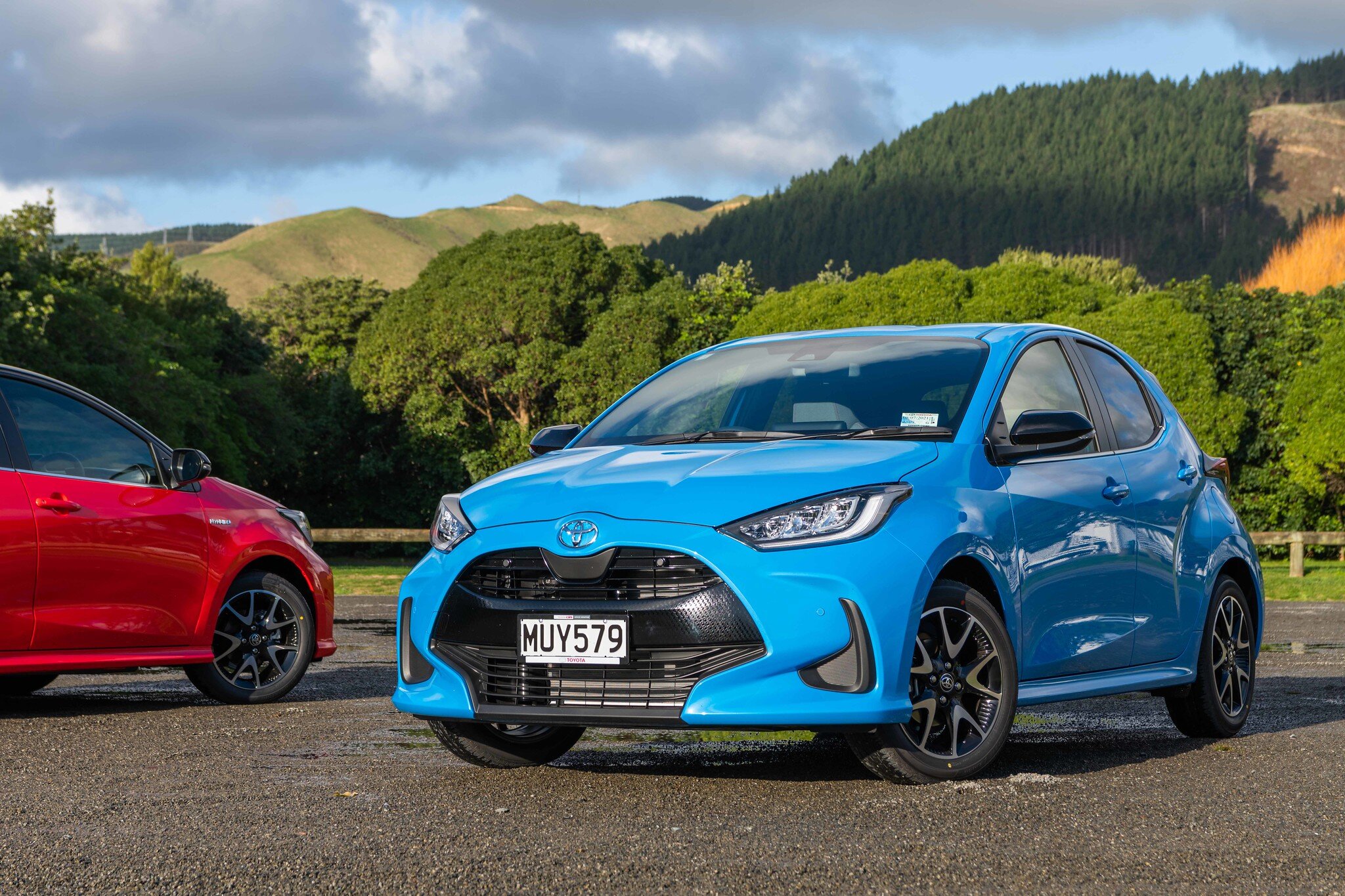

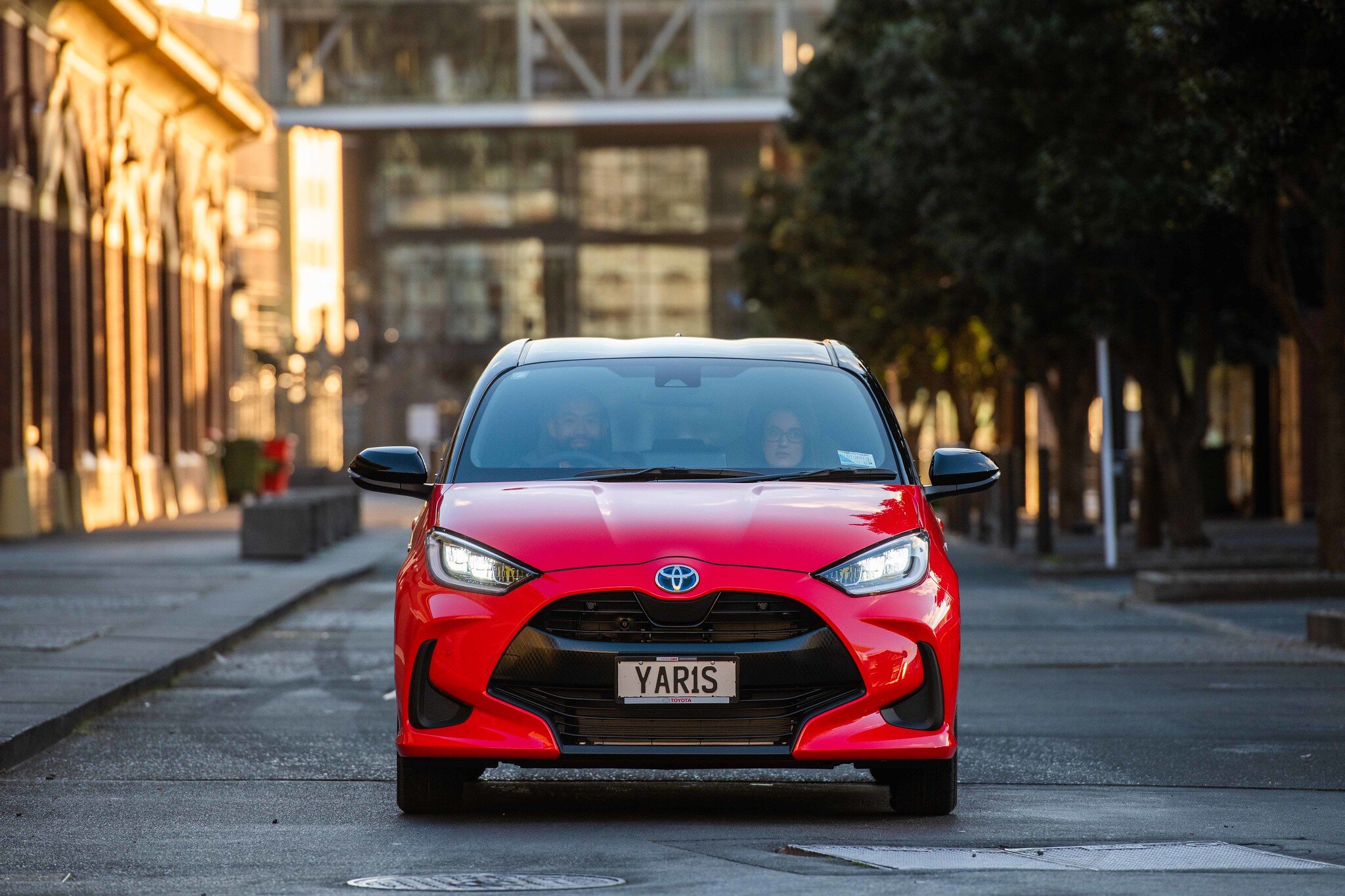
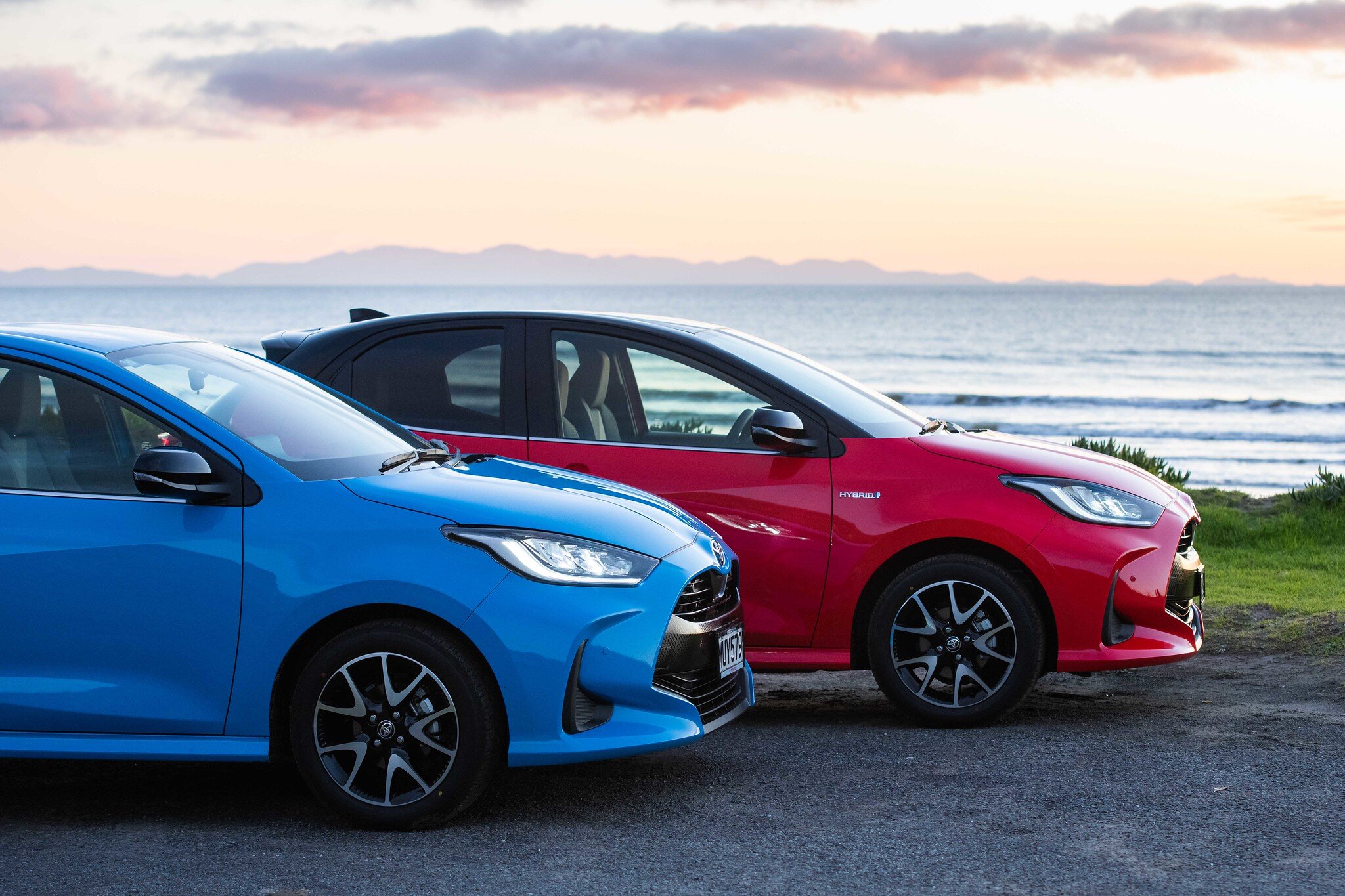
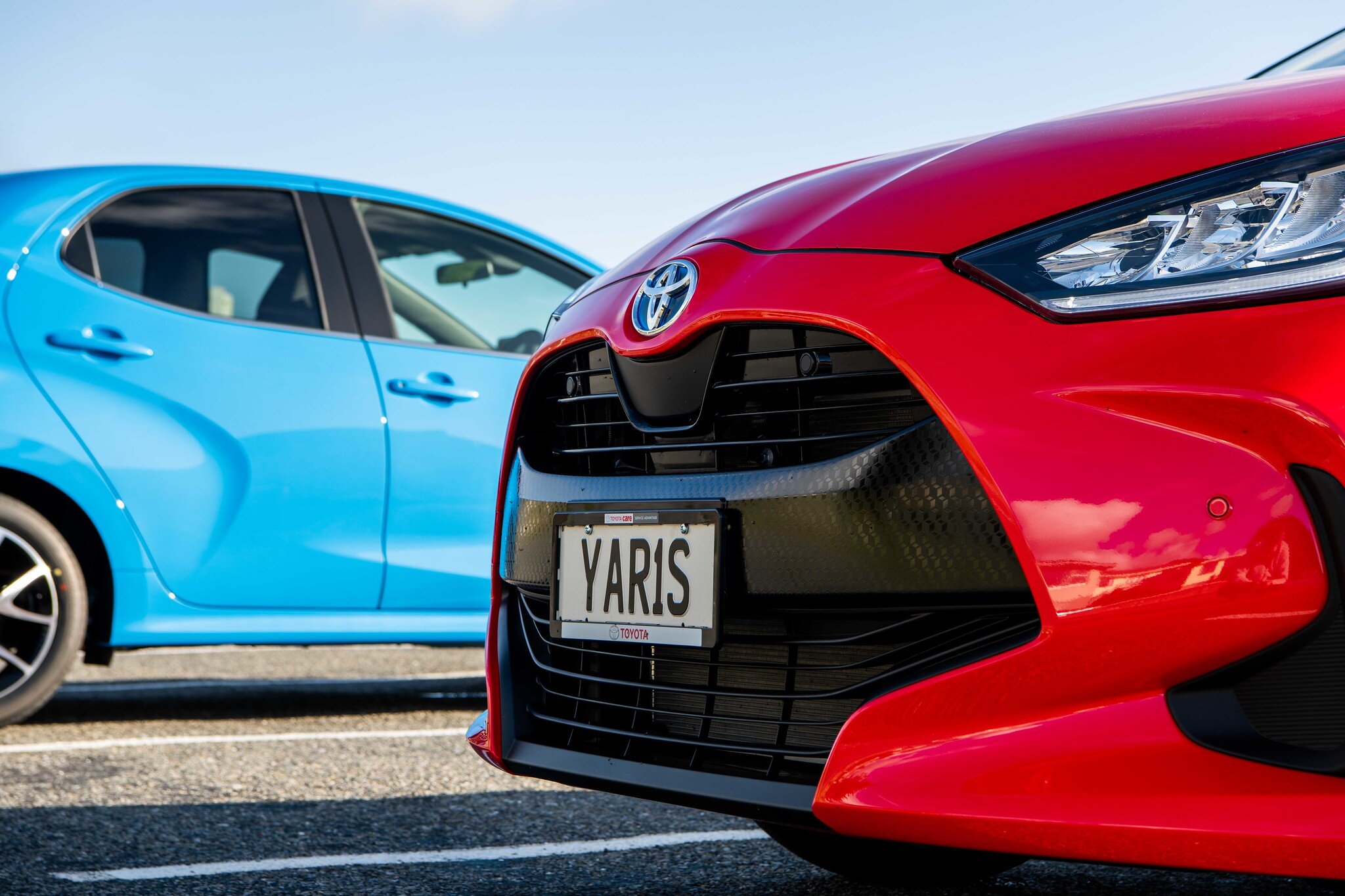

A PERENNIAL strong seller for Toyota is set for a rise in stature.
The Corolla has become the next candidate passenger car for conversion into something it’s never previously been, a crossover.
Announcement of the – you guessed it – Corolla Cross came from today’s global unveiling in Thailand, where it is being built and will be sold first.
Availability in other right-hand-drive markets will commence in 2022. Toyota New Zealand has confirmed itself as a starter.
“We have secured this product for our line-up and are excited to launch it in due course,” said chief executive Neeraj Lala.
“This addition will continue to add breadth to our overall range, with more SUV options for our customers. We will release more information closer to the time of launch.”

Toyota head office says Corolla Cross benefits from its experience as a pioneer in recreational SUVs, which triggered 25 years ago with the original RAV4 - a vehicle that is now the world's best-selling SUV.
The brand sees this model as delivering a design philosophy of "Corolla meets SUV", blending the best aspects of both worlds. “It balances a dynamic, powerful, sleek and sophisticated design with high levels of SUV practicality,” according to the press information.
Corolla Cross is on the same GA-C platform as the Corolla hatch and sedan, ensuring a high level of body rigidity and a well-balanced chassis for responsive and agile driving, a comfortable ride and outstanding quietness, Toyota believes.
Other features include a spacious cabin, easy entry into and exit from the car and excellent luggage space, as well as a high level of safety equipment inherited from Corolla hatch and sedan.
The brand says Corolla Cross will place between Yaris Cross, releasing in NZ later this year, and RAV4 and be available with either a petrol engine or a petrol-electric hybrid powertrain, but has yet to be more specific.

THAT funky looking baby Toyota crossover you had your heart set on?
Good news. It might yet be here by Xmas. With emphasis on the word ‘might’.
In tandem with Toyota’s overnight international unveiling of the Yaris Cross, Toyota New Zealand has re-stated intent to have the car on sale before the end of 2020.
However, it shouldn’t be taken as a absolute hard and fast promise, the exact quote being: “Toyota New Zealand expects to introduce this model towards the end of 2020.” So, if you’re aching to have one as a Christmas pressie … maybe also consider a Plan B.
That timeframe is months behind the original expectation, but is pretty good effort nonetheless if achieved.
This car, remember, was likely the world’s first automotive victim of coronavirus, having been pulled last minute from being revealed at the Geneva Motor Show in the first week of March. Sorry, make that the virtual Geneva show, because the actual event was also cancelled days before opening by … well, the same thing.
At that time, too, the brand was so publicly pessimistic about the production timeframes it left impression right-hand-drive markets might not see it until 2021. Which might, of course, still be the case, given that most of the major RHD recipients are reporting just that timeframe.

Let’s hope for TNZ’s sake it makes the boat this year. Even though the new car market is heading toward massive bust – with prediction of being at least 40 percent down on last year – after some really good years, the small crossover and sports utility sector had really been hitting its stride prior to Covid-19 lockdown. Conceivably, then, if any cars are going to be sold, the chances of them being from this category have to be fairly good, not least when it has the extra twists of a hybrid drivetrain and a high tech all-wheel-drive.
The car’s make-up has been touched upon before, but just to recap: It’s a crossover built on the same 'GA-B' compact car platform as the imminent new fourth-generation Yaris hatchback. It promises more space, increased ride height and even the option of four-wheel drive. With a twist: It’s an electric motor-driven system.
Today’s photos are of the hybrid in flagship form, on 18-inch wheels that provide a nice finishing touch to a styling that’s neatly adopts the same wheelarch shape and rising door sill detailing that have taken the RAV4 to new heights. An upright nose and vent design, sharp creasing and high-tech lighting also mark it out as a street cred champion.
In terms of size, the Yaris Cross sits on the same wheelbase as the new Yaris, but is actually 240 millimetres longer. A bigger proportion of that has been added behind the rear wheels (180mm), which should mean a larger boot. It is also 20mm wider (presumably due to the arches) and 90mm higher. And, usefully, it has 30mm more ground clearance, too.
At 390 litres, the boot volume is a touch more than the equivalent Yaris hatch. The rear seat backs split 40:20:40 and there's a variable boot floor arrangement to help make the most of the space. A powered tailgate will apparently be available.

About that all-wheel-drive. Toyota calls it 'AWD-i', for intelligent. It certainly is. The system uses an electric motor to turn the rear wheels, supplementing the regular powertrain up front in the car. Apparently, it operates when pulling away from rest and accelerating, but otherwise only when traction at the front axle is limited.
Yaris Cross has the same powertrain choices as the hatch, meaning 1.0- and 1.5-litre three-cylinder petrol engines. TNZ has previously explained that its focus is on the latter, which is, according to the maker, more thermally efficient than a typical diesel engine. This further fuels the claim that the hybrid edition is 20 percent more efficient than the engine in the outgoing Yaris Hybrid. The brand says it also seemingly has the 'world's fastest combustion speed'. Does that translate into decent low-down torque?
Nothing has been revealed about the hybrid side’s electric motor, save that it is lighter and more compact than before, in part through it eschewing a nickel-metal hydride battery for a 27 per ent lighter lithium-ion item, which also allows more power to the motor more often. Maximum system power is quoted at 76kW. Toyota also says that the CO2 figures are 120g/km for the front-drive model and 135g/km for the AWD, on WLTP assessment.
The spec? A lot has to be finalised, but the car has been configured to offer a large wireless device charger, heated steering wheel and big head-up display. Touchscreen infotainment is likely to be present on most versions, as is a generous suite of active safety functions, under the 'Toyota Safety Sense' umbrella.

MotoringNZ reviews new cars and keeps readers up-to-date with the latest developments on the auto industry. All the major brands are represented. The site is owned and edited by New Zealand motoring journalist Richard Bosselman.